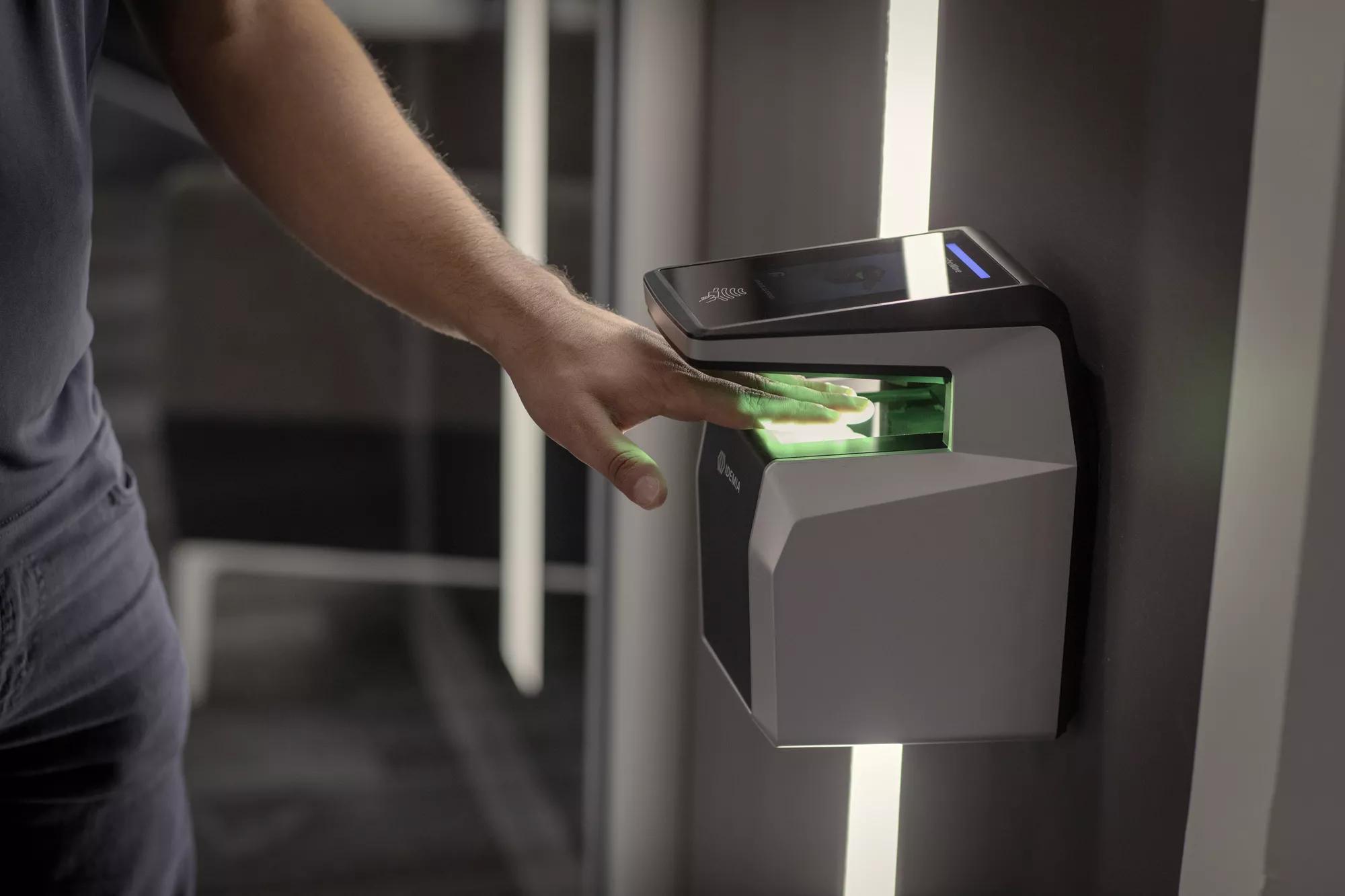What Leaders Should Know About Commercial Access Control Systems

Commercial Access Control
The heart of every organization’s physical security strategy lies in its ability to regulate who has access to its premises, and when. For this reason, building a comprehensive commercial access control system is critical.
Traditionally, security leaders protected their people, assets, and property through lock-and-key systems bolstered by on-site guards - but as threats have evolved, so too have access control systems. Now, many leaders are adopting more sophisticated digital access control solutions that provide multiple layers of security, like biometric readers and cloud-based visitor management. Leaders should acquaint themselves with these innovative technologies and trends to ensure they adopt the most secure solutions.
As you begin reviewing access control solutions, you may ask yourself: How do I manage access to my building in a non-intrusive, highly secure, yet innovative way? The answer depends on several factors, including the nature of your organization’s business, its footprint, scale, risk profile, and technological capabilities.
Let’s review the current state of access control and unpack how leaders can identify the best solution for their organization today.
Understanding access control solutions
Every organization - and entrance, for that matter - carries a unique set of needs and conditions. As such, access control options are diverse. But if there’s one universal similarity, it’s that commercial access control systems typically authenticate entry for approved users based on credentials. Users can be authenticated based on their knowledge (pin code or password), their possessions (badge or key), or their inherent characteristics (biometrics).
The best option for your organization will depend on its mission and priorities. For example, a biometric scanner will significantly expedite the entry process, making this type of technology a great choice for leaders looking to reduce time spent during transitional periods.
At Securitas Technology, we typically sort access control solutions into the following offerings:
-
Cloud-based Access Control - Cloud-based solutions allow administrators to manage user entry protocols and credentials from anywhere, at any time, granting improved flexibility, scale, and reliability. Cloud-based solutions also allow the option for remotely managed access control services.
-
On-Premise Access Control - A long-established access control solution comprising of software and hardware that is managed from a physical server installed on your business premises and connected to your organization’s IT network.
-
Biometric and Facial Recognition - These access control methods rely on characteristics inherent to each authorized user and are therefore highly secure, fostering greater accountability for entry and exit.
-
Mobile Credentials - This increasingly popular option relies on technologies that most employees carry daily, alleviating the need for physical badges, cards, or other identification. Resultingly, mobile credentials provide fast and convenient access.
-
Proximity-based Credentials - Proximity-based (Prox) systems remain one the most recognized forms of access control. These include proximity cards, badges, and fobs that use Radio Frequency Identification (RFID) signals to communicate with door readers, wirelessly. This type of technology dates back several decades and has evolved considerably over time to become increasingly smart and secure. Modern forms of proximity-based access control credentials make use of encrypted, contactless smart card technology, operating on a 13.56Mhz radio frequency. Smart card credentials are considerably more secure than traditional 125Khz prox systems, which are becoming obsolete due to concerns about the ability for credentials to be easily cloned.
-
Knowledge-based Credentials - This describes the basic method of gaining access to a secure area using non-physical credentials, such as a Personal Identification Number (PIN) or password known only by the individual requiring access.
-
Visitor Management - Securitas Technology’s all-in-one approach to visitor management eliminates the need for manual tasks or long paper trails, instead relying on automation and scalable technologies to increase efficiency and decrease administrative costs as part of your access control system.
It’s important to note these categories are not mutually exclusive. For instance, an organization might rely on Securitas Technology’s visitor management solution, which could include remotely controlled cloud-based access control protocols and biometrics (depending on the client’s preferences).
A leading partner like Securitas Technology will guide you through this complicated process to ensure you receive the most beneficial access control system for your organization.
The future of building access control
One innovation in access control is becoming increasingly prominent: touchless systems. According to data collected from a third-party survey* by Securitas Technology, data analytics and touchless biometrics are the most likely technologies to be adopted in the next 18 months.
In a world that values speed, convenience, and safety, it’s easy to see why these solutions are rapidly gaining popularity. Touchless access control systems eliminate the need for physical interaction, thus providing a safer and more efficient user experience. Furthermore, these solutions create a much more efficient entry and exit procedure by eradicating the need for physical access credentials like keys and badges. By tying access control to existing assets - such as phones or physical characteristics - leaders also alleviate the risk of lost identification, which can result in costly ID replacements at best and unauthorized or possibly dangerous entry at worst.
Incorporating an innovative access control system
Adopting touchless access control systems isn’t just about purchasing and installing new equipment. Ideally, the process should involve a long-term roadmap to ensure seamless integration and an elevated user experience. Common markers on that roadmap may include:
-
Integration - Leaders should ensure any new system integrates well with existing security infrastructure. This includes physical security equipment as well as surveillance cameras and alarms. To be safe, ask your trusted security partner whether their solutions will be interoperable with your existing technologies - and if not, forge a plan to update other infrastructure.
-
User adoption - New technologies require acceptance from all users. In this case, “users” includes everyday entrants like employees and visitors, as well as system administrators. If possible, implement staff training and create a somewhat gradual access control transition plan.
-
Data protection - As with any technology interacting with personal data like facial images or biometrics, access control systems should be thoroughly vetted for compliance. Top security partners will provide information about their privacy and data storage policies. For example, Securitas Technology’s biometrics and facial recognition solutions never catalogue machine-readable personal information. Furthermore, user data is never used for any purpose outside of access control.
-
Scaling - Any chosen access control system should be capable of growing and adapting with your organization. Typically, these solutions should provide easy access to change user permissions.
Unsure of where your organization falls on this roadmap? Our experts at Securitas Technology are ready to walk you through visitor management, regardless of your organization’s specific needs.
Learn more about how we can partner with you to help create a safer and more secure environment for your employees, customers, and visitors.
*Data collected from a third-party survey by Securitas Technology, involving 900 security decision makers from various industries across France, Sweden, UK and the US.
Disclaimer: By using the Blog section of this website ("Blog"), you agree to the terms of this Disclaimer, including but not limited to the terms of use and our privacy policy. The information provided on this Blog is for information purposes only. Such information is not intended to provide advice on your specific security needs nor to provide legal advice. If you would like to speak to a Security representative about your specific security needs, please contact us.























